Floral artist Christian Ravnbak on creating personal stories
Christian Ravnbak has worked with flowers since his gap year in France at 16. Here, he became infatuated with daffodils and mimosas. Upon returning to Denmark, tasked to decorate chef Frederik Bille Brahe's Danish restaurants with flowers, 24-year-old Ravnbak honed his métier to encompass beautiful and personal table decorations with antique collectibles and flowers displayed at restaurant openings, private events and dinners for esteemed fashion houses.
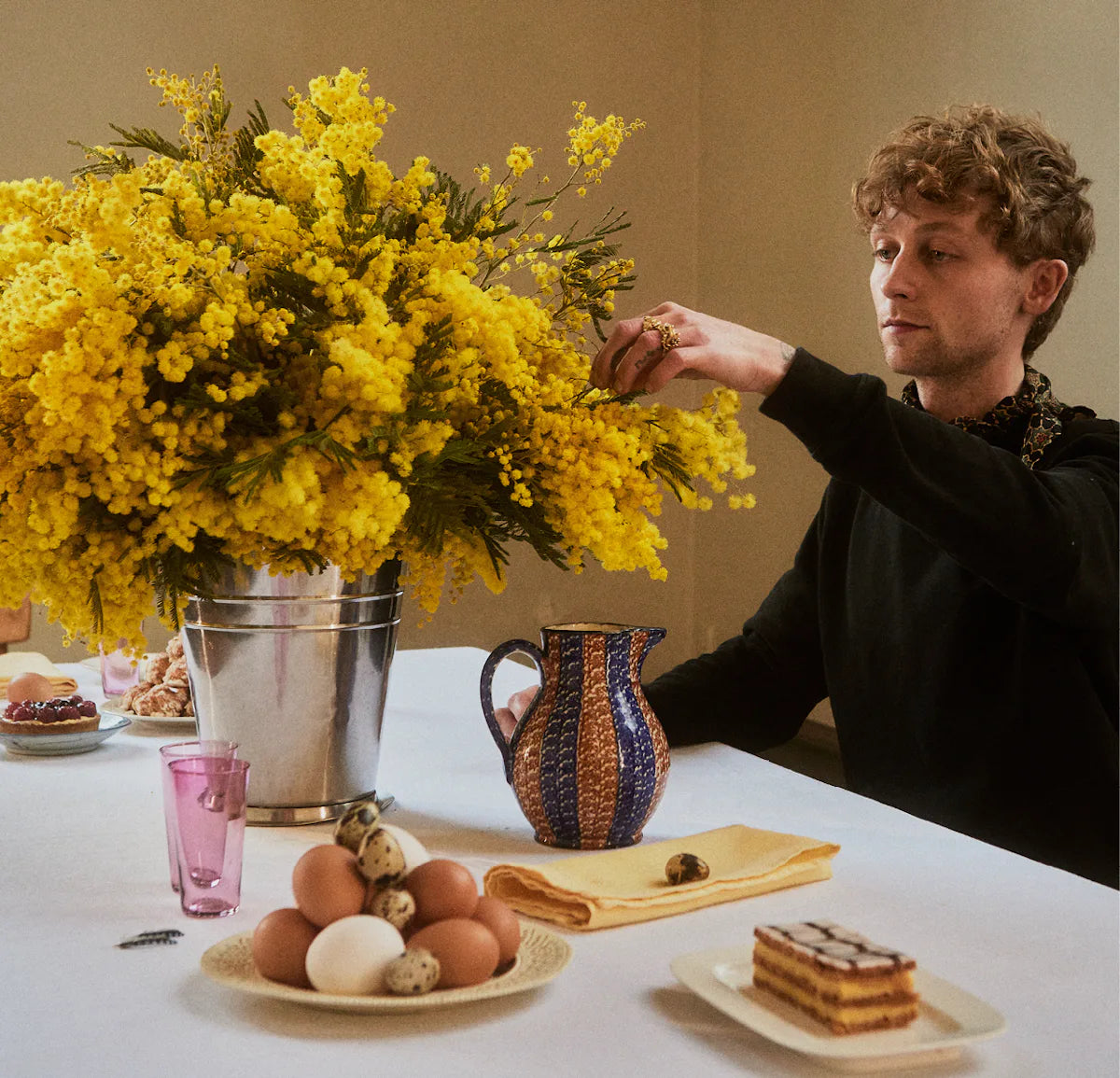
I moved to Paris for a year to learn the language after finishing ninth grade. In March, street vendors in yellow stalls would sell small bunches of daffodils tied so tightly they looked like microphones. They probably just saw an opportunity to make money, but for me it was a fantastic scene that unfolded as they stood and shouted for customers. The flowers were so beautiful. On a trip to the South of France, I discovered mimosas for the first time. They grow as birch trees do in Denmark. To experience a mimosa tree in bloom, a big yellow cloud of flowers bursting to life in the warmth of the spring sun, is incredible.
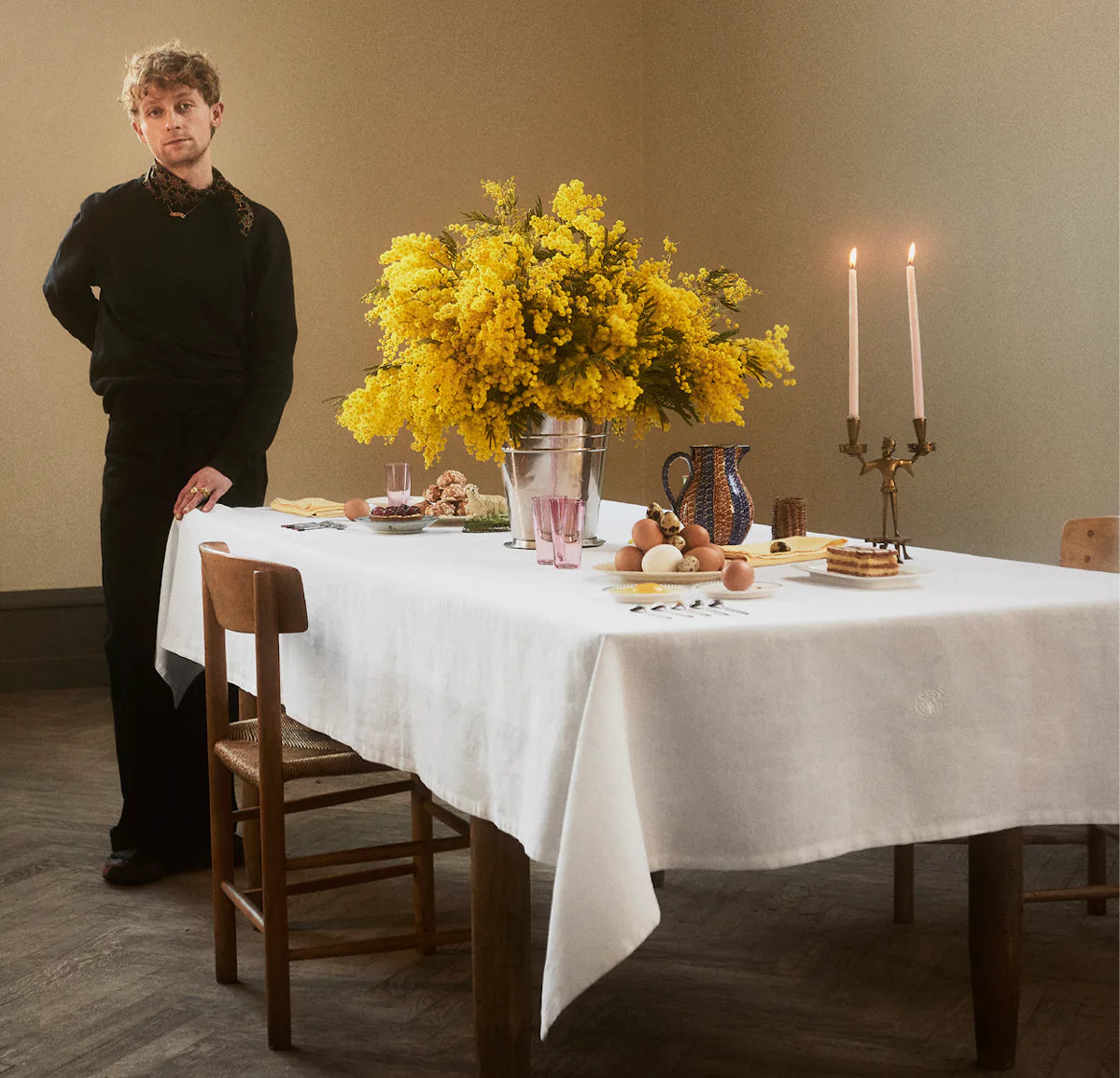
It was in France that my fascination with flowers really began to grow. It was also here that I started to collect antiques.
I found so many beautiful bowls, cups, plates and vases at the local markets. When I first began working with flowers, it was often based around a vase or bowl I had found. I was looking for a way to add something more to the objects I had collected. When I combined flowers with antiques, I realised that this was what I could bring to the table.
When I’m looking for flowers to decorate a table setting, I typically choose ones that are meaningful to me. Those which evoke memories, like the daffodils and mimosas in France. Another favourite is lily of the valley, a delicate and fragrant flower that I planted with my grandmother when I was a child. Or dahlias, which I was allowed to pick in vast quantities when I worked for Camilla Plum [Danish gastronome, –ed] and used to fill a 19th-century terrine. When I see a flower that moves me, it gives me a high. I want to take it home and put my own stamp on it. It's always an intuitive process; I never plan which flower to choose in advance.
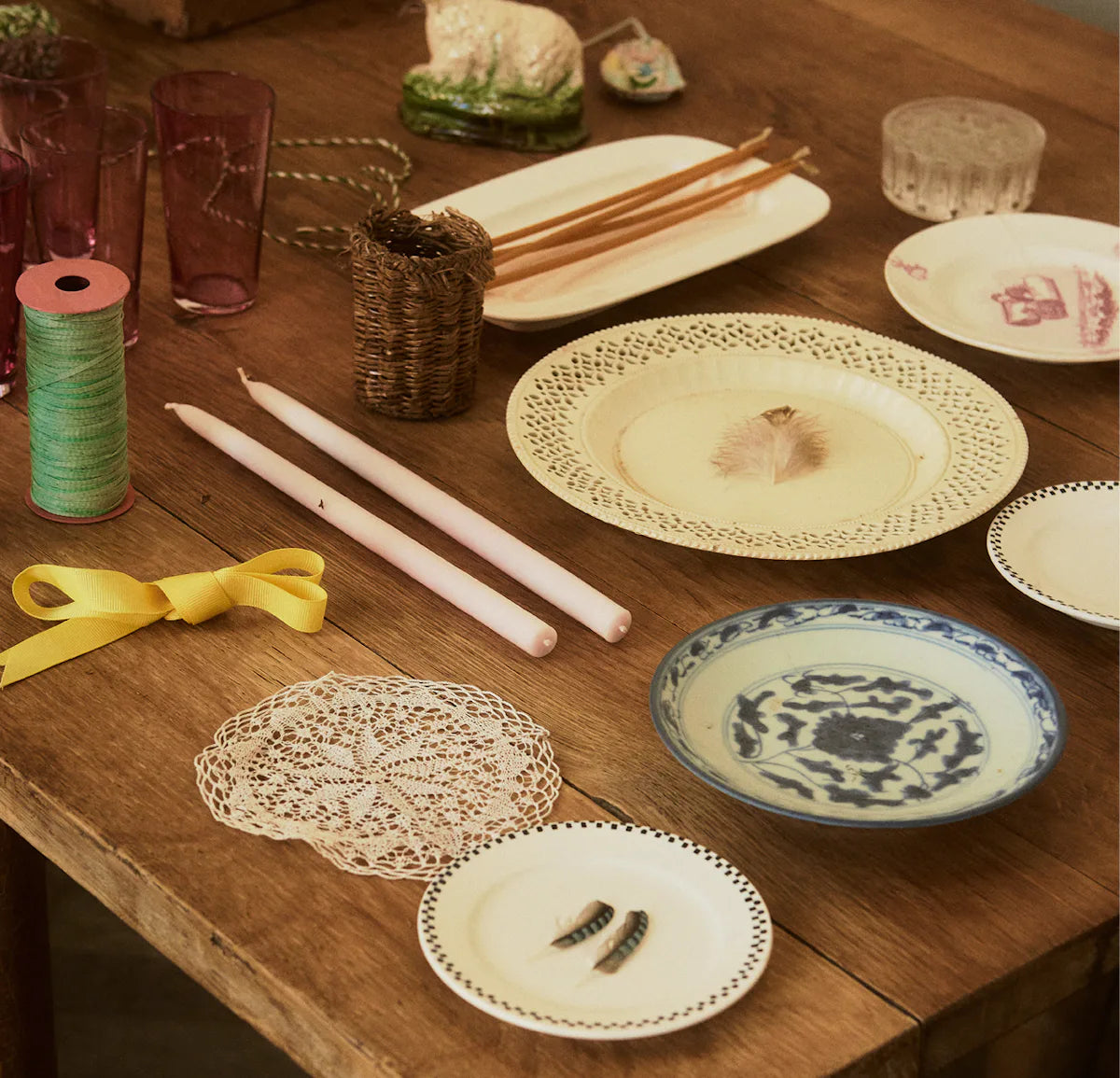
It's important to me that the objects I use tell a story. I look at them and think: ‘You have really lived. What have you seen? How happy I am that you make my flowers so beautiful.’ I can only interpret their history based on how they appear. Who made them isn’t important; it's more about enjoying their look. Serving my breakfast on a particular plate with a lifetime of use behind it brings me a sense of inner warmth, a spark. Much like going to a concert and thinking it can't get any wilder.
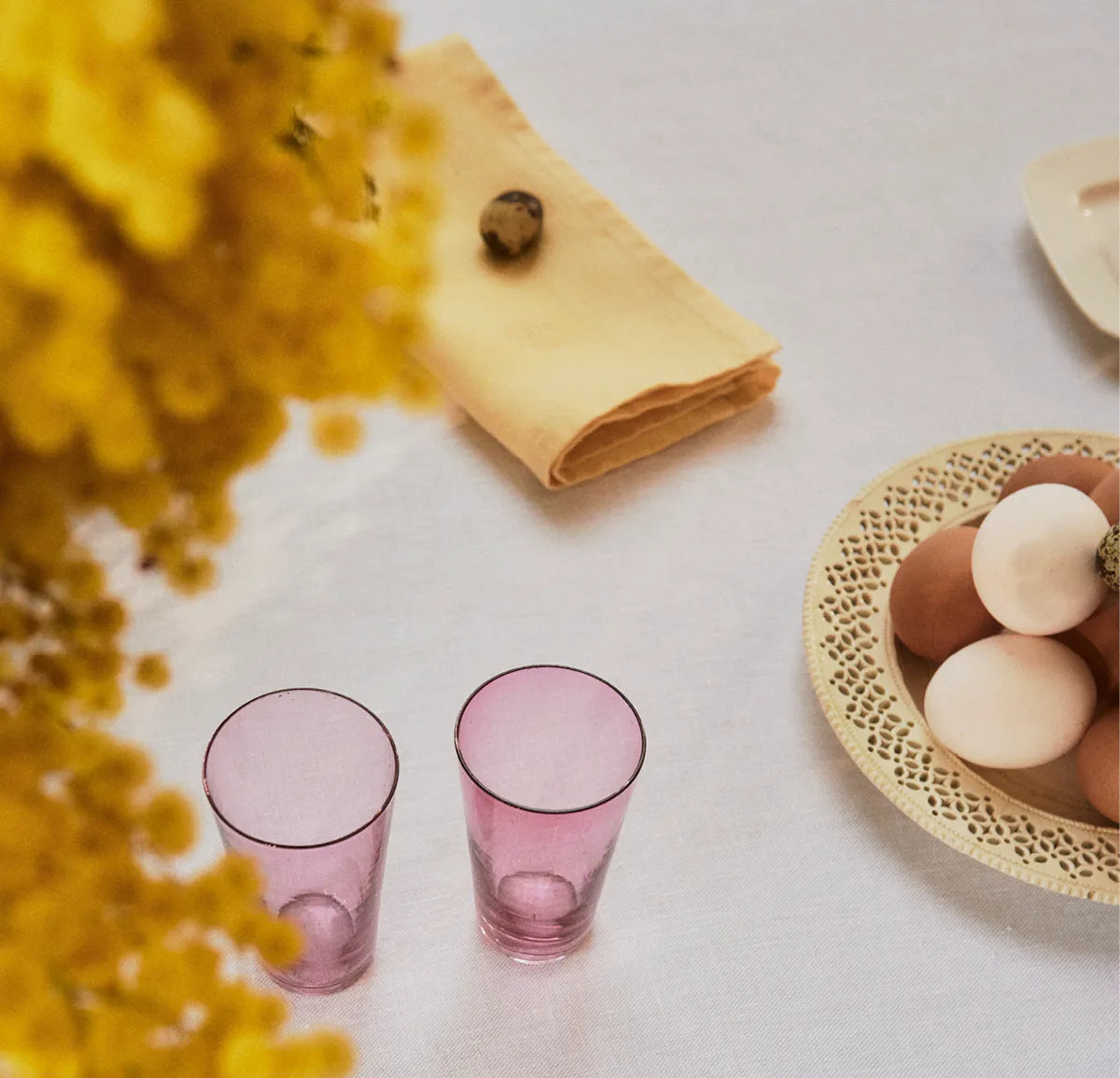
I'm not sure that the people I invite to eat from the same plate experience the same feeling, but just being allowed to share it with others makes me happy.
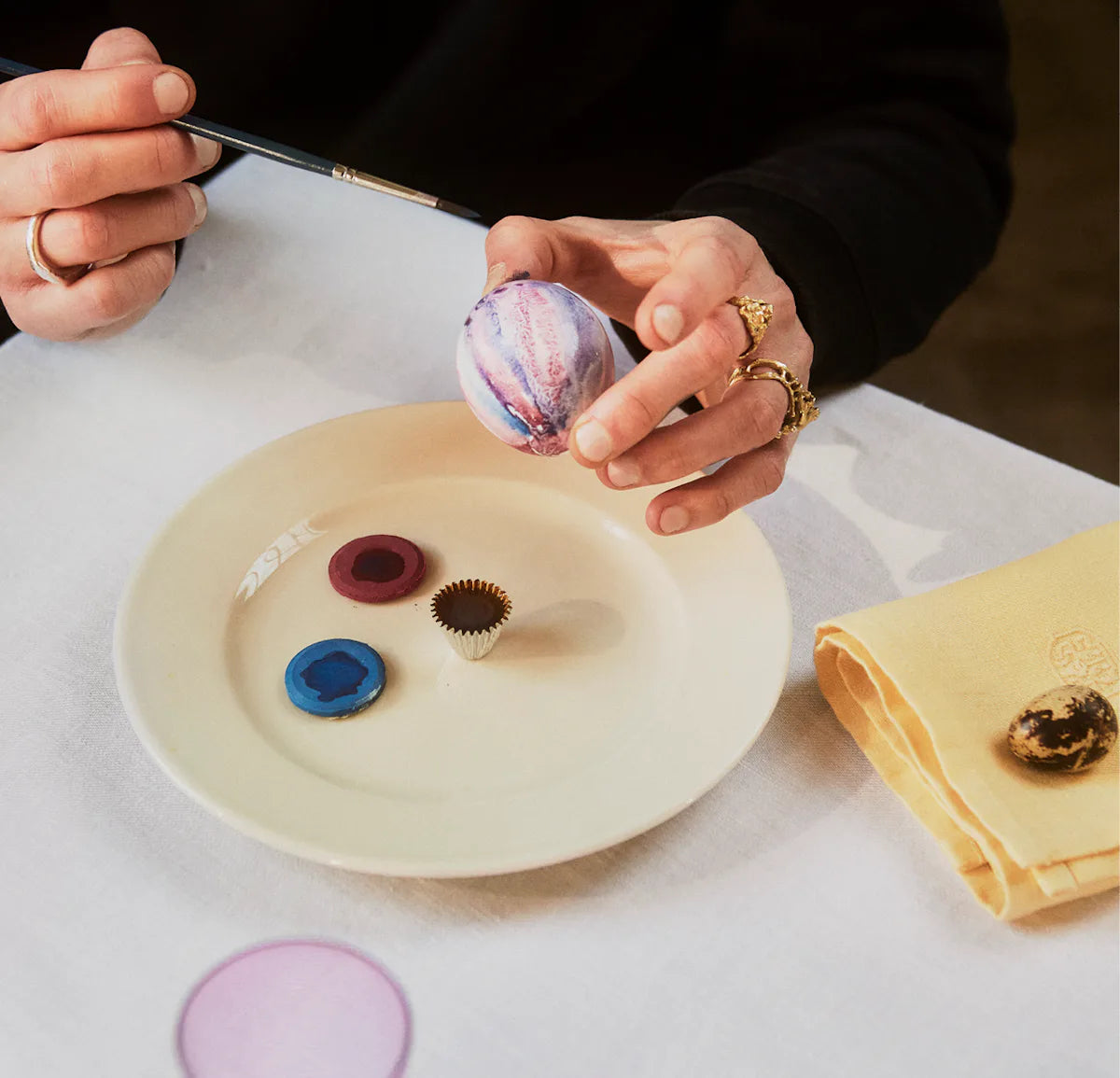
To me, setting a table means creating small universes and stories. The flowers carry personal memories and the objects have a history. I'm not sure that my story can be seen by everyone, but for me the flowers, vases, plates, spoons and tablecloths always tell something. I can only hope that my choices touch the guests. It's impossible for me to say why the objects work so well together, but they do. Their placement is decisive: how they stand beneath the flowers. I don't have a recipe. It's just something I feel intuitively when I see it.











